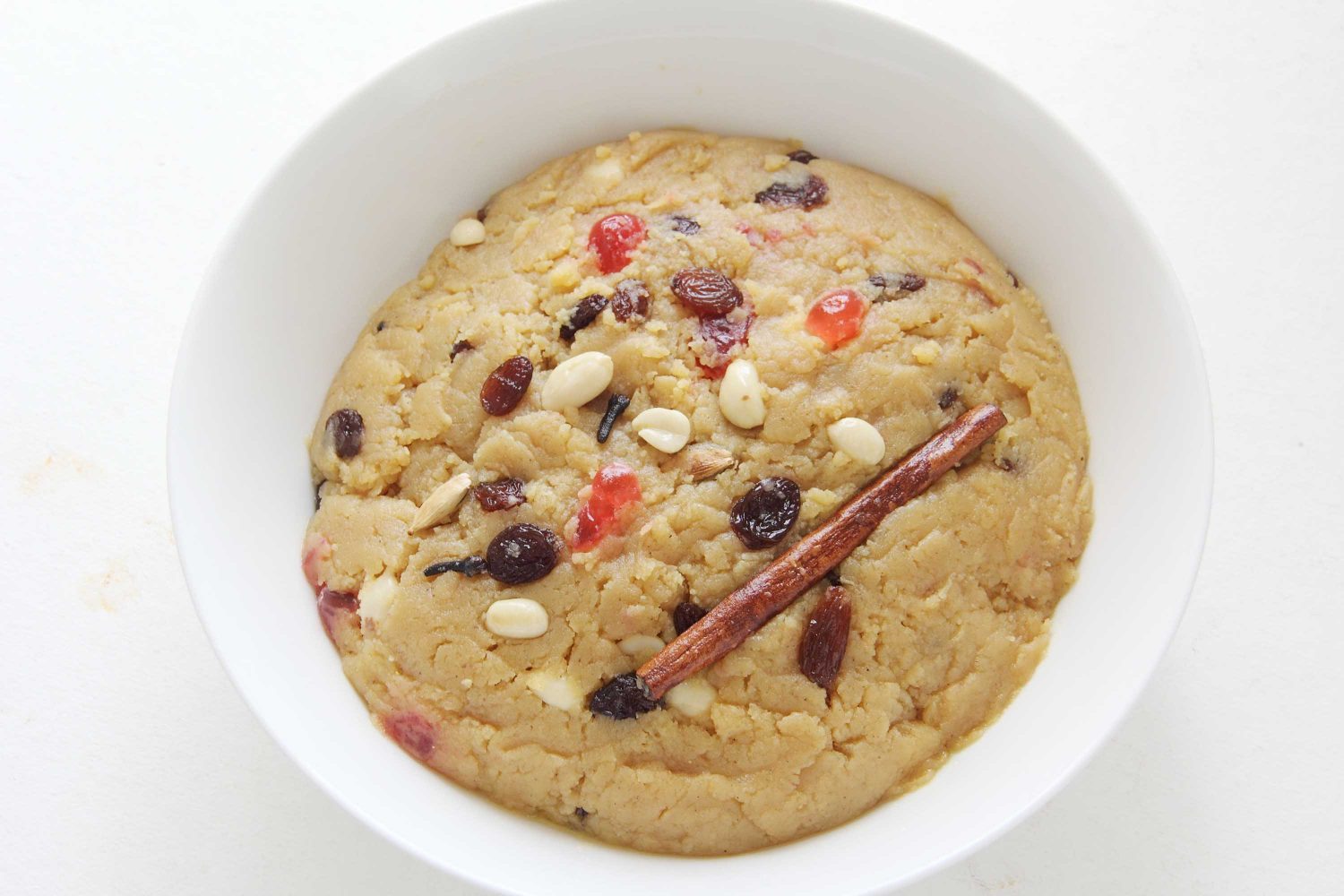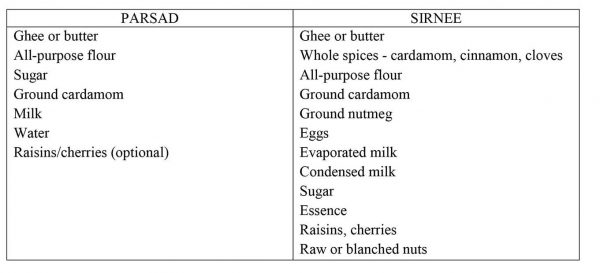There are many things that we can point to that make us different, and, there are many things that make us realize that we are not really that different, after all, we share the same values, uphold the same standards and strive for similar goals, and, we eat the same food. If you ever had Sirnee at Eid or at any Islamic celebratory occasion, you may say to yourself, “This is just like Parsad that Hindus make.” The thing is, you won’t be completely wrong for thinking so, they are essentially made with the same ingredients with minor differences that make each stand out. You see, while we may come from different backgrounds, there is a certain togetherness we have in Guyana when we celebrate religious holidays as national holidays, regardless of our creed. It is one of the things that makes us Guyanese.
I come from a family of different ethnic backgrounds; and among my family I count Christians, Hindus, and Muslims. Therefore, various religious functions, certain rituals and observances are not alien to me. What I have always found fascinating and intriguing is how similar the foods were, particularly among Hindus and Muslims, and how those influences also impacted the foods made whenever there was a celebration of a Christian holiday.
The dining table told the real story of how people can be different and yet, closely knit. As children, my cousins and I would declare and differentiate if we wanted Muslim Mitai, Hindu Vermicelli (made in the style of payasam – thick, creamy soup like) or Vermicelli Cake which we associated as being the Muslim version of vermicelli. We would ‘pick and choose’ simply because all of it was available. Sirnee, we would call Muslim Parsad.
What is Sirnee?
Sirnee is a sweet dish that is made as part of the celebratory feast at Eid, such as Eid al-Fitr, the holiday currently being celebrated to mark the end of Ramadan (the holy period of fasting observed by Muslims around the world). While it is popular at Eid, Sirnee is also made to mark special occasions such as weddings, birthdays etc. It is one of those things that’s difficult to describe, I think of it as a type of pudding, it is soft, sweet, spiced, cooked dough, made of flour and butter or ghee (clarified butter). In the broader scheme of things Sirnee would fall under the category of halwa – a broad term used in India to describe a cooked mixture of the same pudding-like consistency with ingredients such as semolina, corn flour, wheat flour, various types of ground cereal grains, nuts, fresh and dried fruit and even vegetables like carrots and beets. Different halwa(s) vary in consistency, some soft and pasty, some moist and creamy, others dry; some soft yet firm enough to hold a shape if molded. Sirnee falls into the latter category. I like taking a bit of it and forming into a ball and popping it into my mouth.
The obvious question now is how is Sirnee different from Guyanese Hindu Parsad. Parsad for us is a dish made as part of the temple offerings which is shared at the end of a Pooja or service. Like Sirnee it is a stand-alone dish, but its purpose is different – directly related to a religious offering. However, these days people make Parsad to eat and enjoy without any of the religious trappings associated with it. Sirnee though is one of the dishes always made to celebrate Eid.
Both Sirnee and Parsad are made with ghee or butter and flour, milk, and spices. Traditional Parsad is made without raisins but for decades now people have been adding raisins and sometimes cherries to the mix. Sirnee on the other hand, always contains dried fruit such as raisins, cherries and nuts. Let us agree that they are both deliciously sweet puddings. The main difference between the two are ingredients and quantity of said ingredients. Each family has their own recipe for making both or either pudding. The only other difference I can think of has to do with the sequencing – the order in which the ingredients are added to the pan to be combined.
Here’s a breakdown of the ingredients in the order in which they are combined to make each dish.
Noteworthy
- From the list of ingredients, you can see that Sirnee has more ingredients than Parsad. Sirnee is the richer of the two sweets not only because of the number of ingredients but also the quantity of each ingredient used based in each family’s recipe.
- Sirnee is sweeter than Parsad given the use of sugar as well as condensed milk.
- While there are similarities, the flavour profile is very different. With Parsad, the use of 1 spice gives it a distinct flavour, in this case, cardamom. However, with Sirnee you have a more rounded flavour given the spice combination. It is important to note from the list of ingredients that the spices are cooked and added in two forms – whole and ground. Spices cooked whole give a subtle and more of an overall flavour to food. Ground spices give a stronger flavour.
- Apart from the difference in flavour profile, the texture and mouthfeel is similar with a slight bit of extra tenderness given the addition of eggs to Sirnee. If you don’t like eggs in your Sirnee, you can omit it (I do). Only aficionados might pick up the difference in mouthfeel.
Like a lot of recipes of traditional dishes, each family’s version is different. Ingredients with measured amounts are not written down, most of these types of foods are handed down through learning by watching and doing. I remember when I first learned to make Parsad one of my cousins talked me through ingredients and the process over the phone from overseas. To determine the quantity of each ingredient, I made judgements based on her description of a coffee cup of this, a pot spoon full of another etc. Most of her instructions with regards to the process was to observe the visual cues – the ghee will absorb the flour and get dry and crumbly but lower the heat and keep stirring until it becomes wet and sandy. This turns out to be a key stage for making both Parsad and Sirnee. A lack of patience and failure to do this and you will find the roof of your mouth coated with a tacky layer of fat that is quite off-putting when you eat the Parsad or Sirnee.
Eid al-Fitr is celebrated over a period of days even though we only have 1 official public holiday. So, if you have not yet had your fill of Sirnee, make some today and share with your family and friends.
If you are observing the festivities, Eid Mubarbak!
Cynthia
Sirnee
This is my version of Sirnee made with only sugar as the sweetener, instead of sugar and condensed milk. There are no eggs in the recipe either, however, please read the notes if you would like to include condensed milk and eggs in your Sirnee.
This recipe serves 5 – 6 people; double the ingredients to make a larger batch.
INGREDIENTS
- 1 cup brown sugar
- ¾ cup evaporated milk
- 1 teaspoon vanilla essence
- ¾ cup (6 oz.) unsalted butter
- 1 – 2 cinnamon sticks
- 4 green cardamom pods, cracked
- 5 whole cloves
- 2 cups all-purpose flour
- ½ teaspoon ground cardamom
- ¼ teaspoon freshly grated nutmeg
- ¼ cup raisins
- ¼ cup cherries, halved
- ¼ cup raw or blanched and peeled peanuts
DIRECTIONS
- Mix together the sugar, milk and essence until the sugar is dissolved. Set aside.
- Add the butter and whole spices – cinnamon, cardamom, cloves – to a cold until tiny bubbles start to appear at the edges.
- Add flour and stir continuously for 10 – 15 minutes. The mixture would be dry at first, keep stirring and cooking until it looks sandy and wet with moisture on the surface.
- Stir in ground cardamom.
- Turn heat to medium high and add milk mixture and stir continuously. Keep stirring to incorporate the liquid and the flour mixture, then sprinkle in the raisins, cherries and nuts. Reduce the heat a little and keep stirring until the mixture comes away easily from the sides of the pan. This should take about 5 – 8 minutes.
- Leave in the pan to cool or transfer to a serving dish to cool. Serve warm or at room temperature.
NOTES
- If you would like to use condensed milk, reduce the sugar to ¾ cup and add ½ cup of condensed milk. Mix the condensed milk with the evaporated milk, sugar and essence as instructed in direction # 1. Use the entire can of condensed milk if doubling the recipe and 1 cup sugar.
- If you would like to use eggs, add 1 egg to the milk-sugar-essence mixture as instructed in direction # 1. Use 2 eggs if doubling the recipe.
- If you are allergic to nuts, omit them from the recipe.
- Chopped walnuts or cashew nuts can be used instead of peanuts.







